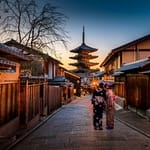TRAVEL AROUND
INDIA
India is a captivating country in South Asia, rich in culture, color, and contrast. It ranks among the most visited destinations in Asia—and for good reason. Whether you’re a backpacker on a budget, a couple seeking a romantic getaway, a solo traveler on a soul-searching journey, or a luxury explorer chasing curated experiences—India offers something truly special for everyone.
From golden beaches to snow-capped mountains, from dense jungles to intricate palaces, from spiritual rituals to street food tours—India promises a wide range of unforgettable adventures. You can join the rhythm of colorful festivals, wander through centuries-old temples, trek in the Himalayas, or simply relax in serene backwaters.
If you’re planning your first trip to India, this guide is here to help. We’ll walk you through essential travel information, the best times to visit, top destinations to explore, average travel costs, must-pack items, and practical tips to prepare for your journey.
Basic resources & travel tips
If you’re planning your first trip, check out our top travel tips to help you get started. We’ve also included some handy resources to make your visit easier and more enjoyable.
Top Destinations in India

New Delhi

Agra

Ladak

Jaipur

Goa

Varanasi

Kerala

Himalayas
Smart Travel Tips & Costs for Visiting India
India is a destination that effortlessly weaves together ancient traditions and modern life, offering everything from 5,000-year-old temples to buzzing metropolises like Mumbai and Bengaluru. With 40 UNESCO World Heritage Sites, over 22 officially recognized languages, and a railway network that serves more than 23 million passengers a day, India is as vast as it is diverse. Whether it’s your first trip or your fifth, understanding travel costs, regional customs, and smart itinerary planning can make your journey smoother and more enriching. Here’s what you need to know to make the most of your adventure through India.
Best Time to Visit India
October to March is the best time for most of India, with pleasant weather ideal for sightseeing in places like Delhi, Rajasthan, Kerala, and Goa.
Summer (April–June): Very hot, but great for hill stations like Shimla, Manali, and Ladakh.
Monsoon (July–September): Rainy and lush—good for nature lovers and Ayurvedic retreats, especially in Kerala.
Quick Tip: For festivals like Diwali (Oct–Nov) or Holi (March), plan ahead as travel demand spikes.
Travel Tips
Visa & Entry
- e-Visa: Available for most nationalities. To Apply online [Click Here]
- Cost: $10–$100 depending on country & visa duration (30 days to 1 year).
Health & Safety
- Vaccines: Hepatitis A, Typhoid, Tetanus, and routine shots recommended.
- Water Safety: Drink only bottled or filtered water.
- Food Tips: Eat freshly cooked food; avoid street food unless it’s crowded (a sign of turnover and safety).
- Travel Insurance: Essential for health and theft coverage. Go [Here]
Transport Tips
Connectivity & SIM Cards
- Local SIM: Get at airport or major stores (Airtel, Jio, Vi).
- E-Sim: Also, you can use a Esim (From Here)
- Cost: ~$5–$10 for 1–2 GB/day for 28 days.
- Wi-Fi: Available in hotels and cafés, but slower than SIM data.
Cultural Etiquette
- Dress modestly, especially at religious sites.
- Right hand only for eating or giving/receiving items.
- Remove shoes when entering homes or temples.
Travel Costs
India is known for being a budget-friendly destination, but costs can vary widely depending on your travel style and region. The good news is that with a little planning, you can experience incredible culture, food, and landscapes without breaking the bank. Here’s a breakdown of the typical costs you might encounter.
Accommodation
- Hostels: $5–$10 — social, clean, Wi-Fi (Zostel, Madpackers)
- Mid-Range Hotels: $25–$50 — good for couples and solo travelers alike
- Luxury Escapes: $150+ — Taj, Oberoi, or heritage palaces fit for royalty
=> You Can Confirm Hotel Booking from [Here]
Food
India is a food lover’s dream, with rich flavors, regional diversity, and meals to fit every budget—from street snacks to royal thalis.
- Quick and Tasty: Street food and local eateries (called dhabas) offer delicious meals like samosas, chaat, dosas, and biryani for as little as ₹50–₹200 ($0.60–$2.50). You’ll eat well without spending much.
- Sit-Down Restaurants:
A mid-range restaurant meal typically costs ₹400–₹1,000 ($5–$12) per person. Think hearty North Indian curries, South Indian thalis, tandoori dishes, or Indo-Chinese favorites. - Fine Dining:
For a high-end culinary experience—whether it’s modern Indian cuisine, a heritage palace restaurant, or a Michelin-starred spot—you can expect to pay ₹2,500+ ($30+) per person. Some tasting menus or 5-star hotel restaurants may go up to ₹10,000+ ($120+).
Transportation
India’s transportation system is vast, affordable, and surprisingly efficient—but smart planning is key, especially for long-distance travel:
- Metro or Local Bus: In major cities like Delhi, Mumbai, or Bengaluru, metro rides and city buses are budget-friendly, with fares starting at ₹10–₹60 ($0.12–$0.75) per ride.
- Indian Railways (Intercity Trains): India’s rail network is one of the largest in the world. A sleeper class ticket for long-distance travel can cost as little as ₹300–₹800 ($3.50–$10), while AC classes range from ₹1,000–₹3,000 ($12–$36) depending on the route and class.
- Premium Trains (Vande Bharat, Rajdhani, Shatabdi): For faster and more comfortable travel, expect to pay around ₹1,500–₹3,500 ($18–$42) for popular routes like Delhi to Varanasi or Mumbai to Ahmedabad.
- Intercity Buses: Sleeper or luxury buses cost between ₹500–₹2,000 ($6–$24) based on distance and service quality.
- Domestic Flights: Budget airlines like IndiGo, SpiceJet, and Akasa Air offer cheap flights across the country. One-way fares can range from ₹2,000–₹6,000 ($24–$72) if booked in advance.
- Travel Passes: While there’s no nationwide rail pass like Japan’s JR Pass, some states (e.g., Rajasthan, Himachal Pradesh) offer tourist bus passes or regional rail packages for convenience and savings.
Sightseeing and Activities
India offers a wealth of free and budget-friendly attractions that let you soak in its history, spirituality, and vibrant culture without spending much:
- Free & Fascinating: Many iconic landmarks—like the Gateway of India in Mumbai, India Gate in Delhi, or the Ganga Aarti at Varanasi’s ghats are completely free to experience. You can also explore countless temples, churches, and mosques (like the famous Meenakshi Temple in Madurai or Hazrat Nizamuddin Dargah in Delhi) without an entry fee.
- Paid Attractions:
Major historical sites like the Taj Mahal (₹250–₹1,300 / $3–$15 depending on nationality), Qutub Minar, or Amber Fort typically charge between ₹200–₹600 ($2.50–$7) for entry.
Special cultural experiences—such as classical dance performances, cooking classes, or Ayurvedic treatments—can range from ₹1,000 to ₹5,000 ($12–$60). - Bonus Tip: Festivals like Holi, Diwali, or Navratri offer unforgettable experiences—and participating is often free!
Shopping: A World of Souvenirs & Gadgets
India offers a colorful and eclectic shopping experience from handcrafted souvenirs and traditional textiles to modern malls and bustling street markets. Whether you’re after budget finds or quality keepsakes, there’s something for every traveler:
- Souvenirs: Affordable souvenirs like keychains, fridge magnets, incense, or local snacks (think masala chai or spices) typically cost ₹100–₹500 ($1–$6). For something more authentic, consider handmade crafts, carved wooden items, or regional textiles, which might range from ₹500–₹3,000 ($6–$36) depending on the quality and craftsmanship.
- Clothing & Fabrics: India is a paradise for textile lovers. Scarves, kurtas, sarees, or pashminas can cost anywhere from ₹300 to ₹5,000+ ($4–$60). Local markets like Delhi’s Sarojini Nagar, Jaipur’s Johari Bazaar, or Kolkata’s New Market are full of treasures—just be ready to bargain!
- Electronics: While India offers a wide range of gadgets, prices for branded electronics (like phones, headphones, or cameras) are generally on par or slightly higher than international prices due to import taxes. However, Made-in-India accessories or regional brands can offer excellent value—just check warranties and authenticity before purchasing.
- Pro Tip: Always shop at government emporiums or certified handicraft stores for guaranteed quality and fixed pricing—perfect for hassle-free souvenir shopping.
How to Travel Smart and Save Money in India
- State Tourism Passes & Local Cards: Some regions offer tourist transport passes or multi-attraction entry tickets—like in Rajasthan or Delhi. These can save money if you plan to visit multiple sites in a short time.
- Eat Like a Local: Skip hotel restaurants and dive into the local food scene street vendors, canteens, and small eateries serve delicious, authentic meals for as little as ₹50–₹200 ($0.60–$2.50).
- Stay in Budget Accommodations: Consider hostels, guesthouses, or homestays for a clean, safe, and affordable stay. Apps like Zostel, Moustache Hostels, or OYO offer options in central locations for budget prices.
- Take Advantage of Free Attractions: Explore temples, ghats, street markets, festivals, and natural wonders—many of India’s most fascinating experiences are completely free and full of cultural value.
Final Word: Travel Smart, Travel Wise
India may seem overwhelming at first glance, but with a bit of planning and the right mindset, you can explore this incredible country on any budget. Whether you’re savoring spicy street food, riding a sleeper train across states, or standing in awe before centuries old temples and forts, India offers a rich, diverse experience that’s worth every rupee. Get ready to discover one of the world’s most vibrant and soulful destinations affordably, meaningfully, and unforgettable.
Safety standards in India
- Transportatin: India has a vast transport system metro in major cities are modern and safe, and trains like Vande Bharat and Rajdhani offer reliable long-distance travel. Roads can be chaotic, so caution is advised.
- Infrastructure: Urban infrastructure is improving through smart city projects. Earthquake prone zones have building codes, though enforcement varies.
- Food Safety: Food hygiene is regulated by FSSAI. Stick to clean, busy eateries and freshly cooked street food to avoid health issues.
- Public Safety: Violent crime is low in tourist areas, but petty theft and scams can occur. Use app-based transport and stay alert in crowded places. Women travelers should follow standard precautions.
- Disaster Preparedness: India has early warning systems and a national disaster authority. Stay updated in regions prone to floods, cyclones, or earthquakes.
- Overall: India is generally safe for travelers who plan smartly, stay aware, and respect local customs. It’s a dynamic country that rewards curiosity and caution in equal measure.



